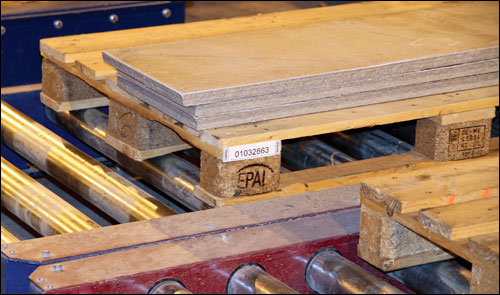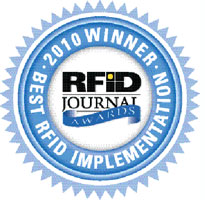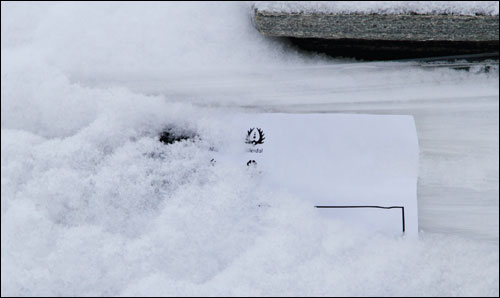Jun 01, 2010Minera Norge, a Norwegian company that manufactures slate tiles, blocks and related products for roofing, flooring and other applications, is breaking new ground in RFID by using the technology to track heavy, tough-to-move loads in one of the world's harshest weather environments. The company's main production site and 20,000-square-meter (215,280-square-foot) storage yard are in Oppdal, Norway, an alpine town that can make other frosty cities, such as Minneapolis and Juneau, seem almost tropical by comparison. "We work all winter," says Knut Fossum, the company's production manager. "Of course, it's not the best conditions to work in, but we manage."
The challenging setting, as well as more conventional business demands, created a simple need for Minera: to quickly and accurately track slate-bearing pallets at its production facility, in order to identify products in all weather conditions, view accurate stock inventory data in real time, speed production and shipping processes, and eliminate shipping errors caused by product misidentification.
The extreme environment doesn't tolerate basic technologies that may work perfectly in more benign climates. Any tracking system that could function in the yard would have been acceptable, but RFID proved to be the only technology fully suited for the task.
Breaking the Ice
Minera turned to ACT System Skandinavia, a technology solutions provider, for help in developing and deploying its identification and tracking infrastructure. "They started to look for bar codes, but we advised them to go for RFID," says Jan Erik Evanger, ACT's managing director.
Even so, not just any RFID technology would be acceptable. "The outside RFID equipment would have to work reliably in all weather conditions," Fossum says. "In the winter, the outside readers would have to read the pallets even if there was 1 meter [3.3 feet] of snow laying on them."
The RFID system is controlled by ACT's SuperDAGFINN software, which links into Minera's VISMA enterprise resource planning (ERP) application, supplied by Amesto. Data from RFID interrogators is fed into the ERP system, which then presents the status of all pending orders to production employees, who can view the information on a nearby touch screen.
An Intermec IF61 RFID interrogator is strategically situated at the manufacturing conveyor line, which transports the pallets through the facility, and linked to a scale that automatically weighs each pallet. The weight data, which reflects the total amount of tiling material on the pallet, is stored in software, along with the tag ID number. Next, a second tag is printed and attached to the protective stretch wrap surrounding the pallet. The additional tag serves double duty: as backup support in case the main pallet tag fails, and as customer-readable text-based order identification.
In the shipping yard, an Intermec IV7 interrogator and a Haicom HI-204III USB GPS transponder are installed on each of the yard's two forklifts. An on-board screen lets forklift drivers identify the pallets they are moving, allowing them to verify that they have picked up the correct order. Meanwhile, the combined GPS/RFID data stream allows the ACT software to track the precise location of pallets as forklifts move them around the yard. Whenever a forklift releases its load and backs away, the RFID interrogator loses the signal and the software records the pallet's exact yard location. A GPS display also gives forklift drivers directions to their next pallet pickup.
"The project took about six months from conception to delivery," Evanger says. The system went live in May 2009.
The system lets Minera quickly identify individual products under all weather conditions. "With RFID, you can locate the pallets, even when you can't see the ID in the snow," Fossum says.
It also enables the company to track its products in real time and maintain an accurate inventory count without any human intervention. And it helps expedite warehousing and shipping. Minera's managers are updated automatically when production work on each pallet is completed, clearing the way for the order to be released to storage or shipping. Forklift operators are also notified automatically that a pallet is ready to be picked up from the production area and moved to a long- or short-term holding area.

Whenever a shipment leaves Minera's yard, the ERP software automatically records all the order details, including number and type of items and shipment weight. "This saves the time we used to spend updating the system manually," Fossum says.
The technology inspires Minera's production employees to work more efficiently, Fossum believes. The system's touch screen allows a worker to access a specific job order and request the stones he needs to fulfill that order, simply by tapping his chisel against the screen. Each of the eight stonecutters working on the company's manufacturing line has an ID card with an embedded UHF Gen 2 RFID tag. This gives workers access to the ERP-generated order status display system and lets them monitor their own work progress. "They can see what they are earning every hour," Fossum says, "because they punch in all the production as they produce."
Before the system could begin living up to its potential, ATC and Minera needed to solve a critical nonweather-related challenge: shielding the forklift-mounted interrogators and their antennas from metallic interference caused by the vehicles' metal forks, and physical damage caused by workers' shovels. "The readers are very sensitive to metal," Fossum says, "but if stones or rocks were able to hit the readers, [the readers] would be destroyed for good."
The solution? A "compromise" in antenna placement, Evanger says. "We had to physically protect the units while simultaneously ensuring that read performance wouldn't suffer." Strategic placement of the RFID equipment inside precise insulated holes drilled into the frame that holds the forks did the trick. "In essence, we had to hide the units so they couldn't be hit," Fossum says.
The close cooperation between Minera and ACT allowed the companies to develop an RFID system that could tolerate all anticipated weather conditions, without any noticeable performance dropoff, Fossum says. "They assured us it would work," he says. "The system was set up in the winter, and ACT said that if it didn't work, they would take everything back."
Fossum is eager to credit ACT with developing a system that has worked effectively and reliably in a decidedly tech-unfriendly environment. "Because this was a new system, we needed to explain to ACT what we wanted and how we wanted it done," he says. "But it was really all their work."
Evanger notes that his company has many years of experience developing RFID systems for businesses with unique needs. "We create complete systems with custom-made and standardized software based on bar codes or RFID," he says.
But Evanger does have a secret to reveal. While ACT was confident that it could create an RFID system able to withstand the very worst weather a Norwegian winter could throw at it, the company was also exploring new territory even as it was designing and deploying Minera's RFID infrastructure. "This was our first solution for outdoor use with RFID," he says.
Yet, despite its practical inexperience with outdoor RFID, the company was able to deliver fully on its commitment. "Our project for Minera utilizes RFID in an industry that, literally speaking, has been living in the Stone Age for years," Evanger says.


